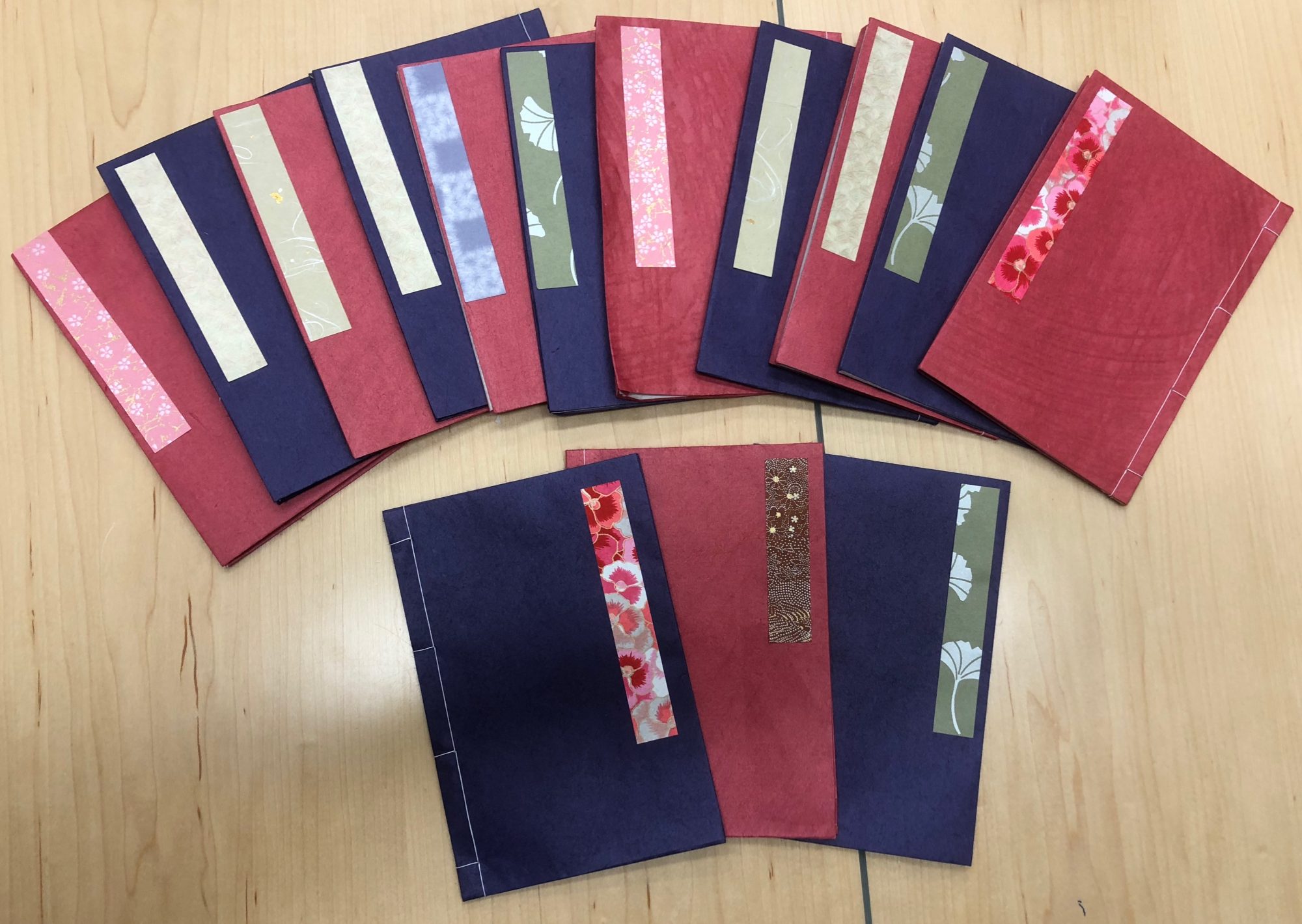The final few weeks of the semester flew by, as they always do.
On April 10, we had a wonderful presentation by Dr. Erin Schoneveld from Haverford College about her study of the twentieth-century avant-garde group, The White Birch Society (Shirakabaha), and their coterie journal. The group used the magazine–a new format!–as a venue for discussing cutting edge ideas about identity and aesthetics, and the journal became very influential in early twentieth-century artistic circles. We look forward to reading her forthcoming book from Brill!
For the final two weeks of class students presented research presentations on a wide variety of subjects, including:
-the Korean newspaper, Manseonilbo, and its production in Manchuria under Japanese occupation in the Pacific War
-the role and place of illustration in China over time
-books about travel and place in Edo-period Japan (meisho zue)
-the production of a popular book in premodern China, and its afterlives in Japan and Korea
-women’s writing and the use of hangul in Choson Korea
-early Shinto texts and their interpretation
-the ways that the manga artist Tezuka Osamu referenced Buddhist ideas
-Serizawa Keisuke and his interpretation of Don Quixote
-the role of the printing press and evangelization efforts by the Jesuits in later 16th-century Japan
-books, literacy, and poetry in the context of 1980s China
As these topics demonstrate, our concept of “the book” has expanded dramatically over the semester to encompass all forms of material texts. We finished with a quick discussion of our “circuit of communication”–although because we had to squish it in on the narrow piece of whiteboard left next to the very large screen, it became a vertical column rather than a circuit! Ideally we would have a loop back up from the reader to the bookseller-publisher to complete it. In doing so, we thought again about how many people play so many important roles in the production and consumption of the book in East Asia.
Thanks to all the students and our many guest contributors for being part of this first iteration of a very wide-ranging and ambitious course. And to those students who finished their degrees with this course, and are now graduates, we wish you all the best in your future endeavors!
